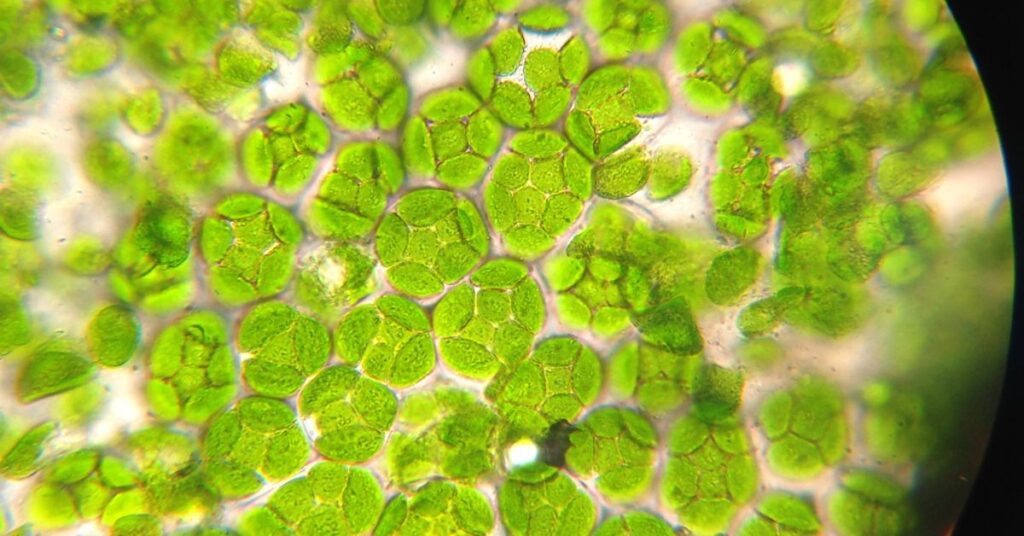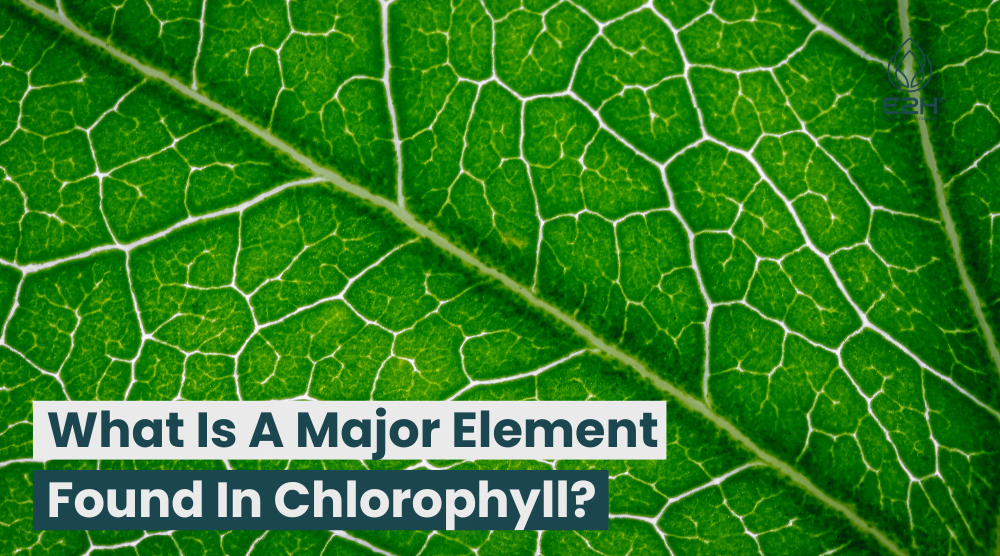The major element found in chlorophyll is magnesium. It is essential for photosynthesis, as it is the central atom in the chlorophyll molecule structure that absorbs light energy and converts it into chemical energy.
What is Chlorophyll?
Chlorophyll is a green pigment found in the chloroplasts of plant cells, and algae as well as in some algae and bacteria. It is green pigment plays a critical role in photosynthesis, where it absorbs light energy and converts it into chemical energy that is used to produce glucose and oxygen.

What is the Major Element Found in Chlorophyll?
The major element found in chlorophyll is magnesium. In fact, the presence and absorption of magnesium is what gives chlorophyll its green color, as the magnesium ion (Mg2+) is at the center of the chlorophyll molecule and is responsible for absorbing the light energy that is used in photosynthesis.
Magnesium is an essential mineral for plant growth and development, as it is a key component of chlorophyll and is required for photosynthesis to occur. Magnesium is also important for many other plant processes, including enzyme activation, protein synthesis, and the production of carbohydrates and lipids.
Why is Magnesium Important for Photosynthesis?
Magnesium is critically important for chlorophyll occurs and photosynthesis, as it is the central atom in the chlorophyll molecule that absorbs green light as energy and converts it into chemical energy. Without magnesium, chlorophyll would not be able to take green light and function properly, and photosynthesis would not occur.
In addition to its role in photosynthesis, magnesium is also important for other aspects of plant growth and development. It is required for the production of ATP(adenosine triphosphate), which is the primary source of energy for all living cells, including plant cells. Magnesium also plays a role in the synthesis of DNA and RNA, which are essential for cell division and growth.
What are the potential health benefits of consuming chlorophyll supplements?
While more research is needed to fully understand the health benefits of chlorophyll supplements, some studies have suggested that they may have antioxidant and anti-inflammatory properties, and could potentially aid in detoxification and blood sugar regulation.

Chlorophyll supplements may support the immune system, promote healthy digestion and gut health, and even contribute to cancer prevention. However, it’s important to consult a healthcare professional before adding any supplements to your diet.
What is a major element found in chloroplast?
The major element found in the chloroplast is oxygen, which is produced during the process of photosynthesis. Chloroplasts contain other essential elements such as carbon, hydrogen, and nitrogen, which are necessary for the synthesis of chlorophyll pigment into organic molecules. However, chloroplasts do not contain any magnesium, despite the fact that this element is crucial for the functioning of chlorophyll pigment molecules within the chloroplast.
Which element is an essential part of chlorophyll?
The essential element & several distinct forms found most important class all in chlorophyll is magnesium. This element is located at the center of the chlorophyll molecule, where it plays a crucial role in the absorption of light energy during photosynthesis. Specifically, magnesium is responsible for capturing photons from light and using their energy to initiate a series of chemical reactions that convert carbon dioxide and water into glucose and oxygen. Without magnesium, chlorophyll would not be able to perform this vital function.
How does chlorophyll absorb light energy?
Chlorophyll absorbs through the various pigments involved in its structure, which are capable of capturing photons from light. This energy is then transferred to the reaction centers in the photosystems of the chloroplasts, where it is used to initiate the process of photosynthesis.

What is the chemical structure of the chlorophyll molecule?
The chlorophyll molecule structure consists of a porphyrin ring, which is a complex organic molecule with four nitrogen atoms arranged in a ring, hydrogen between four nitrogen atoms and a magnesium ion (Mg2+) at its center. Attached to certain side groups the porphyrin ring structure are long hydrocarbon chains, which help anchor the structure of the molecule in the thylakoid membrane of the chloroplast.
What is chlorophyll molecules?
Chlorophyll molecules are pigments green pigment found only in the chloroplasts of plant cells, as well as in some algae and bacteria. They play a crucial role higher plants and in photosynthesis by absorbing light energy and converting it into chemical energy, which is then used to produce glucose and oxygen. Chlorophyll molecule are composed of a porphyrin ring and a magnesium ion, and are responsible for the green color of plants different algae.
Can pregnant women safely consume Chlorophyll?
Yes, pregnant women can safely consume Chlorophyll Supplement in moderate amounts. Chlorophyll is a natural pigment found in green leafy vegetables that is beneficial for overall health, including promoting healthy digestion and reducing inflammation. There is no evidence to suggest that Chlorophyll is harmful to pregnant women or their fetuses when consumed as part of a balanced diet.

However, it is always recommended to consult with a healthcare provider before making any dietary changes during pregnancy. Pregnant women should also ensure they are not taking excessive amounts of Chlorophyll supplements, as this may cause unwanted side effects.
Definitions in the Field: Chlorophyll
FAQs
Is chlorophyll only found in plants?
No, chlorophyll is also found in some algae and bacteria.
What happens to the magnesium in chlorophyll during photosynthesis?
During photosynthesis, the magnesium ion in the chlorophyll molecule absorbs light energy and uses it to convert carbon dioxide and water into glucose and O2.
Why do plants need magnesium?
Plants need magnesium for a variety major types of processes, including photosynthesis, enzyme activation, protein synthesis, and the production of carbohydrates and lipids.
Conclusion
The first what is a major element found in chlorophyll that is magnesium, and it is critically important for photosynthesis and other plant processes. Without magnesium, chlorophyll would not be able to absorb light energy and convert it into chemical energy, and photosynthesis would not occur. Therefore, magnesium is an essential mineral for plant growth and development, and understanding its role in chlorophyll is key to understanding the importance of photosynthesis higher plants in the natural world.
His research and writing have been featured in numerous publications, and he is dedicated to helping people understand the importance of these vital nutrients in maintaining optimal health. If you're looking to improve your well-being through diet and nutrition, Christopher is the expert to turn to.
- Can I Take Maca and Ashwagandha Together: YES! - January 7, 2024
- Can You Take Ashwagandha And Liquid Chlorophyll Together: YES! - January 7, 2024
- Can You Take Shilajit and Ashwagandha Together? - January 7, 2024










